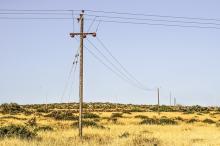Two Large Telcos Miss Connect America Fund Deployment Milestones
This month, both Frontier Communications and CenturyLink put the FCC on notice that neither company expected to meet deployment milestones related to Connect America Fund Phase II (CAF II). In total, rural households in 23 states will have to wait for connectivity that the two large companies were tasked with developing using federal subsidies.
Not-So-Great Expectations
When Frontier and CenturyLink accepted the funding in 2015, they agreed to provide deployment of Internet access speed of at least 10 Megabits per second (Mbps) download and 1 Mbps upload. By the end of 2018, they agreed to have at least 60 percent of the premises within each state connected and 80 percent of the premises connected by the end of 2019.
In their letter to the FCC, Frontier claims that of the contracted 774,000+ locations in 29 states waiting for connectivity through the CAF II program, they have deployed to around 596,000 in CAF II census blocks. They calculate that these deployments come to at least 70 percent in each state where they've accepted funding. The company also says that in 13 states they "may not have met" the 80 percent milestone.
The failure was a continuation of last year, when they reported that they had met the 60 percent milestone in 27 states, but had failed to make the grade in New Mexico and Nebraska.
 Frontier accepted more than $283 million in CAF II funding soon after the FCC redefined broadband to 25 Mbps / 3 Mbps. The CAF II program had also increased minimum connections from 4 Mbps / 1 Mbps to 10 Mbps / 1 Mbps, which seemed outdated almost from the beginning.
Frontier accepted more than $283 million in CAF II funding soon after the FCC redefined broadband to 25 Mbps / 3 Mbps. The CAF II program had also increased minimum connections from 4 Mbps / 1 Mbps to 10 Mbps / 1 Mbps, which seemed outdated almost from the beginning.



